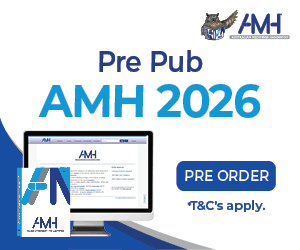A new technique for repairing rotator cuff injuries is delivering better outcomes for people with shoulder pain.
University of Adelaide researchers say about 10,000 repairs to the rotator cuff – the group of muscles and tendons that connect the upper arm bone to the shoulder, allowing movement and stabilisation – are completed in Australia each year. Yet, recent figures show failure or re-tear rates are between 40% and 60%.
Professor Michael Sandow, from the University’s Centre for Orthopaedic and Trauma Research (COTR), was inspired to develop the new technique as he was not satisfied with these outcome statistics.
“The traditional repair technique involved an open operation where the rotator cuff tendon is secured into a bone trench using sutures and with the move to performing repairs with arthroscopy, it now uses multiple anchors drilled into the bone,” said Professor Sandow.
“However, this has not led to an improvement in patient care, and if anything, has led to poorer outcomes. Because of the failure rates, particularly in older patients, there has been a big swing to reverse shoulder replacements instead of cuff repairs.
“However, research has shown that 30% of patients aged under 60 who have a reverse shoulder replacement will need a revision surgery in their lifetime, and it’s a costly and risky exercise.”
Professor Sandow’s new technique is called a trans osseous knotless anchor (ATOK), which works by securing the rotator tendon in place through the bone, much like the traditional open repair, but using arthroscopy to insert anchor points designed by Professor Sandow.
In an initial trial of 15 patients aged 60 and over with large to massive rotator cuff tears, results were overwhelmingly positive, according to the findings published in the Journal of Shoulder and Elbow Surgery.
Professor Sandow recently completed a review of 155 ATOK surgeries in patients over the age of 70, which was similarly positive.
“In results presented at the Australian Orthopaedic Association meeting last year, only two had to have a shoulder replacement after having my surgery, both were following bad falls, while 80% of patients now have none or mild symptoms post-surgery,” he said.
“I see many patients who have had a previous unsuccessful surgery but in whom we have been able to restore good function using the new anchor. For example, one patient was a 55-year-old man who had a partial repair and then more repairs two months later and was still no good.
“He was told by his surgeon after 12 months he had no option but to have a replacement and then he’d only be able to do a desk job.
“After work with a physiotherapist to prepare his shoulder and an ATOK repair, he was back to full duties at his physically strenuous job after three months.”








